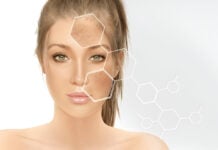Regular exercise and relaxation are essential components of a healthy lifestyle, but your local gym or spa could be exposing you to more than just a good workout or a rejuvenating soak. Dermatologists are increasingly seeing a rise in skin infections linked to shared gym equipment and public spa facilities, raising concerns about hygiene practices and public awareness.
The Hidden Dangers Lurking on Surfaces
Gym-goers often share equipment such as mats, benches, weights, and cardio machines, which can harbor bacteria, fungi, and viruses. The warm, moist environments created by sweat and poor ventilation are ideal breeding grounds for pathogens. Similarly, public spas, hot tubs, and saunas present high-risk environments for microbial contamination, especially when not properly disinfected.
Some of the most common skin infections transmitted through shared surfaces include:
- Tinea corporis (ringworm): A fungal infection that causes red, circular rashes and is easily spread via contaminated surfaces.
- Folliculitis: Infection of the hair follicles, often linked to poorly maintained hot tubs (“hot tub folliculitis”), typically caused by Pseudomonas aeruginosa.
- Staphylococcus aureus (including MRSA): This bacteria can cause boils, abscesses, or cellulitis and thrives on sweaty skin and gym equipment.
- Plantar warts: Caused by the human papillomavirus (HPV), these can be picked up from damp communal showers or poolside areas.
- Herpes simplex virus: In rare cases, shared items like towels or razors can spread cold sores through microabrasions in the skin.
What the Research Shows
A study published in Clinical Microbiology Reviews found that staph bacteria, including MRSA, can survive for days on surfaces such as exercise machines and locker room benches (Otto, 2013). Another investigation into public hot tubs revealed that over half contained bacterial levels above safety standards, particularly when chlorine levels were inadequate (Yoder et al., 2004).
The pandemic temporarily reduced gym and spa attendance, but as people return to communal wellness spaces, dermatologists are observing a resurgence of contact-transmitted skin diseases. Inadequate cleaning protocols and overcrowding further increase the risk.
A study by Singh et al. (2016) reported that fungal infections like athlete’s foot and ringworm were significantly more prevalent among regular gym users compared to non-users. Additionally, Verhougstraete et al. (2015) found that public hot tubs and spa pools commonly failed microbiological standards, increasing the risk of skin and ear infections.
Risk Factors
Not everyone is equally susceptible to these infections. Individuals with the following factors are at greater risk:
- Open cuts, scrapes, or razor nicks
- Compromised immune systems
- Excessive sweating or occlusive clothing
- Sharing towels, razors, or water bottles
- Poor personal hygiene post-workout
Prevention Is the Best Protection
Awareness and hygiene are key to preventing these infections. Here are some practical tips for gym and spa users:
- Wipe down equipment before and after use using disinfectant wipes or sprays provided by the facility.
- Wear flip-flops or sandals in communal showers, locker rooms, and around hot tubs.
- Avoid sitting directly on shared surfaces such as benches or saunas; use a clean towel as a barrier.
- Shower immediately after exercise or spa use and use antibacterial or antifungal body washes if prone to infection.
- Avoid sharing personal items like towels, razors, or clothing.
- Cover wounds or abrasions with waterproof bandages before engaging in activities.
- Choose facilities that prioritize hygiene, including regular water testing in spas and visible cleaning schedules.
What Facilities Can Do
Gyms and spas have a responsibility to protect their patrons. This includes:
-
Regular disinfection of equipment and high-touch areas
-
Educating staff and users on hygiene practices
-
Proper chlorination and filtration of pools and hot tubs
-
Displaying signage to encourage hand hygiene and cleaning equipment
-
Enforcing policies around towel usage and shoe requirements in wet areas
Facilities that neglect hygiene protocols not only put their clients at risk but may also face liability for preventable health issues.
When to See a Dermatologist
If you notice red, itchy, painful, or pus-filled lesions after a gym or spa visit, consult a dermatologist promptly. Early intervention with antifungal or antibiotic treatment can prevent complications or spread to others.
The rise in skin infections from gym equipment and public spas is a growing concern that requires both personal vigilance and institutional accountability. While these communal spaces offer tremendous benefits for physical and mental well-being, they also carry hygiene risks if not properly maintained. By adopting safe practices and staying informed, individuals can protect their skin while enjoying the perks of a healthy lifestyle.
References
- Otto, M. (2013). Community-associated MRSA: what makes them special? Clinical Microbiology Reviews, 26(3), 508–538. https://doi.org/10.1128/CMR.00064-12
- Yoder, J. S., Straif-Bourgeois, S., Roy, S. L., Moore, T. A., Visvesvara, G. S., & Calderon, R. L. (2004). Surveillance for waterborne-disease outbreaks associated with recreational water—United States, 2001–2002. MMWR Surveillance Summaries, 53(SS08), 1–22. https://www.cdc.gov/mmwr/preview/mmwrhtml/ss5308a1.htm
- Singh, R., Wisniewski, P. J., & Malhotra, S. (2016). Gym environments and the prevalence of superficial fungal infections: A cross-sectional study. Journal of Dermatological Science, 84(1), 83–89. https://doi.org/10.1016/j.jdermsci.2016.06.005
- Verhougstraete, M. P., Reynolds, K. A., & Gerba, C. P. (2015). Microbiological evaluation of public spa pools. Journal of Water and Health, 13(4), 1042–1048. https://doi.org/10.2166/wh.2015.194
- CDC. (2020). Preventing Hot Tub Rash. Centers for Disease Control and Prevention. https://www.cdc.gov/healthywater/swimming/rwi/illnesses/hot-tub-rash.html
- Callewaert, C., Vanhaecke, L., De Maeseneire, E., et al. (2015). Toward a bacterial treatment for armpit malodor. Scientific Reports, 5, 8380. https://doi.org/10.1038/srep08380












